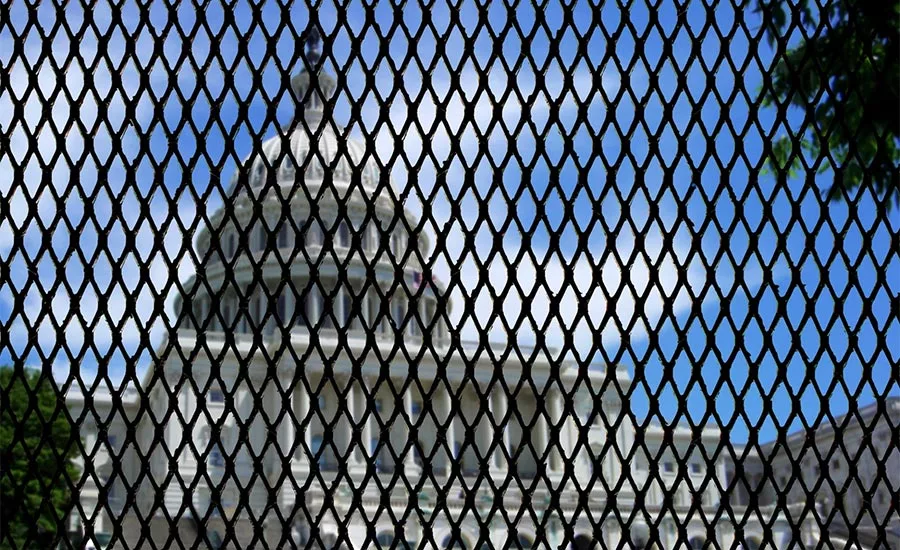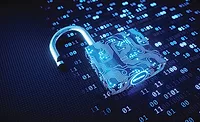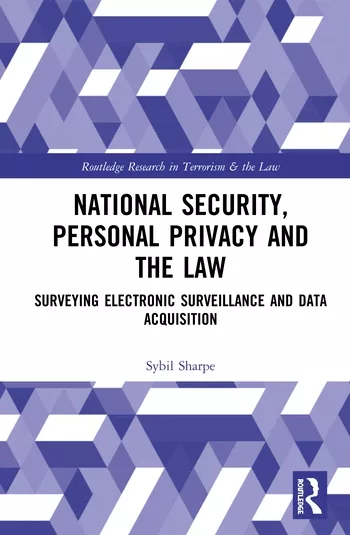Integrated Solutions
Securing the perimeter
When it comes to perimeter security, strong upfront planning and swift real-time reactions supported by technology can go a long way in helping an enterprise secure its outermost layer.



Tough Mudder races draw thousands of participants for events that combine stamina and endurance. For the participants, challenges include live electricity, ice water and, of course, lots of mud. For the organizers, the challenge lies in keeping the perimeter secure.
“These events are largely in rural environments, often an hour or two hours outside a major metropolitan area…typically on a piece of property that is not designed for hosting events – a farm, a dirt bike track, a gravel mine,” shares CEO Kyle McLaughlin. The myriad risks include “everything from nonpaying customers to securing for theft, securing for trespass, or even securing from wild animals — deer and cattle to bears and coyotes.”
McLaughlin isn’t alone. Perimeter security is a major concern for security-focused professionals across a range of industries. The perimeter is the literal first line of defense for everything from temporary events like the Tough Mudder — think races, concerts, parades — to more permanent, security-sensitive installations such as power plants and government buildings.
The whole world got a wake-up call about the significance of perimeter defense on Jan. 6, 2021 when pro-Trump rioters breached a police line and stormed the U.S. Capitol building in Washington, D.C. In the instant when that line between inside and outside dissolved, the vital importance of a strong perimeter became clear.
So, how can security leaders be sure to shore up that outermost barrier at their organizations? Experts say it takes strong upfront planning and swift real-time reactions, all supported by the smart use of technology.
Planning is Key
A perimeter is by nature difficult to defend. Few security teams have the resources to be everywhere at once, yet the nature of the perimeter is that it covers the widest possible geography. In order to effectively deploy resources at the outermost reaches, facility operators and security professionals need to strategize up front.
“Planning is probably the most important step in perimeter security. You have to understand who you are dealing with, what is their intention, what your intelligence tells you about what they have done in the past, or what they are trying to do,” says Timothy Dimoff, President of SACS Consulting & Investigative Services.
“Your level of defense will vary based on what you are trying to secure,” says Bill Schieder, Head of Global Physical Security at Flexport, a San Francisco-based digital freight forwarder and logistics company. “For example, the type of perimeter, location, crime rate, and many other external and internal factors must be taken into consideration.
At Tough Mudder events, “we start with a risk assessment, taking a look at where the risks are, where the highest impact or highest likelihood of risks could occur, and prioritize down from there,” McLaughlin says. “Are there natural alternate entrances where persons or vehicles will be more likely to come across? Where are your high-value target areas, your machinery and equipment areas? Then you harden those high-risk items first,” he says.
In the initial evaluation phase, definitions matter. This is the time to spell out exactly where the perimeter lies, and what it represents. “You need to define your controlled area, your area of influence. It cannot be vague,” says Marcel Altenburg, Senior Lecturer, Crowd Safety at Manchester Metropolitan University.
“There is a point where by law you are required to be in full control. You need to be able to see everything in there, and you need to be able to act inside that area,” he says. “If there is a certain behavior that you demand, you need to be able to supervise that and to control it, and also to influence it in case something isn’t the way you want it.”
The Personnel Component
That up-front planning should help security leaders to make best use of available personnel when it comes to perimeter security. While it typically isn’t possible to have security guards at every point along a large-scale perimeter, careful strategizing can help to maximize the value of human capital.
The first rule of thumb: Keep them moving. “Best practice is to conduct roving patrols, but not metronomically; you don’t want the adversary to be able to predict where your forces are,” says Michael Gips, Principal of security consultancy GIPS LLC in Bethesda, Md. “You change up the timing,” he says. “And if you have someone doing one thing, like standing at a post, you don’t have them do that all day. You switch them off after an hour, otherwise they get lax and they start to not see things. Attention wanes. That’s just how human beings work.”
Security leaders can also look beyond their own staffs, leveraging an all-hands approach to further safeguard the perimeter. McLaughlin deploys private security and off-duty law enforcement personnel to his highest-risk perimeter sites, but he relies on others to help shoulder the burden.
“Every person working in your environment — staff, volunteer or security personnel — should be trained on how to react and report in suspect circumstances,” McLaughlin says. “Our staff may go through extensive in-office and on-site training. Our volunteers may get just-in-time training on situational awareness and the role that they have to play. Our effort is to present that best-quality awareness to each person depending on their role.
In addition to facility or event personnel, local law enforcement can also serve as a key force multiplier at the perimeter.
“Our goal is always to get local law enforcement involved, even if we are entirely on private property, so that they have full awareness of the event,” McLaughlin says. “We are often pretty remote and in the event that we have an incident, we want instantaneous response. That means they have to have some good awareness in advance of what we are doing. You never want to wait until something happens to be shaking hands with law enforcement for the first time.”
Reaction Time
Another key to perimeter defense is a sense of fluidity or an ability to deploy defenses as needed, and in real time.
Altenburg, for example, has helped to secure sporting events where surge capacity is a key concept in perimeter defense. “You may have five gates, but you may find that one of them is suddenly under a lot of pressure,” he says. “You need to see that and you need to deploy extra resources there. If people show up at the wrong point, that is not necessarily bad, but you need to know what you are seeing and immediately know what the plan is to react to that.”
Good communication among your people on the ground can help deliver this real-time awareness. Emerging technologies can also play a role.
Altenburg has experimented with apps that invite event attendees to check in upon arrival. With opt-in tracking features, “we can see when they are checking their data, and where they are,” he says. “If too many people are moving toward one gate, you can use a push notification in the app to tell them there is a shorter queue at a different gate.”
Another tool for managing crowd surge at the perimeter is a modernized sound system. Altenburg has seen this implemented at the Berlin Marathon where a directional sound system is calibrated to address 28 different acoustical zones. “Sometimes you don’t want to address everybody, you want to just address one area and leave the other areas in peace and let them go about their business,” he says. “This offers a way to speak to them in phases, in sizable chunks.”
A number of other technologies likewise can help security professionals to manage a sprawling perimeter, even with a limited force on the ground.
The Role of Technology
Take for example New York City’s Hudson Yards development, a 14-acre complex of residences, offices and shops. “Some of it is public space and some of it is private space. We want to invite people in, we want people to come in, but there needs to be security for the tenants, residents and employees. We also want to make it safe for people who travel here. For all those people coming in, we want them to feel as safe as possible,” says Ed Seaman, Director of Physical Security technology at Related Companies, which operates the space.
With an integrated system of security technologies, Seaman is able to have just 12 people monitoring some 1,200 video cameras.
“We have the cameras tied into access control, so propped-open doors, forced doors, anything like that will pop up a camera view and it won’t go away until the operator acknowledges it or sends a security officer,” he says. “If motion is detected in an area where no one is supposed to be, that will also pop up and they will have to file an incident report.”
Tracking capability helps ensure a timely response to any perimeter event or incident. “On a site this size, by the time you dispatch a guard to go look, the undesirable may be gone,” Seaman says. “With camera tracking, we can follow that person through the camera system as they come into view of the next camera. That shows us he is on Stairwell A or on the second floor. We can track in real time.”
Gips points to radar as another effective means for keeping eyes on a wide-ranging perimeter. “Radar can do a 360-degree scan of a property in seconds. It can show where an object is and get a decent representation of that object. Then, you know where to train your video to get a better image,” he says. “And radio waves work through rain and fog and snow, so they are good in hostile or adverse environments.”
He also says aerial assets can be another effective approach to observing activity at the outer boundary. While drones have become an increasingly popular tool for perimeter defense, he notes, security professionals need to be aware of the limitations.
Most drones have limited battery life and can only stay aloft for an hour or less. Gips suggests that as a tool for perimeter defense, it makes more sense to use tethered drones, which can be hard-wired back to a continuous power supply. “They can stay up for 10 to 12 hours, which is a huge advantage,” he says.
With new technologies emerging all the time, forward-looking security professionals will want to stay ahead of the curve, says Flexport’s Schieder. They need to be looking at the latest tools, and aligning those with their developing perimeter-risk evaluations.
“To future-proof the business and stay ahead of risk, security leaders must build out programs that are long-term and scalable,” he says. “This is one of the reasons that I have always tried to view my role at the company as being a valuable business partner, making sure to have a ‘seat at the table.’”
When it comes to the evolving risk of securing the perimeter, security leaders “should try to be familiar with the growth and development plans of the business, so that they can understand how the growth of the organization might increase the risk,” he says. “This allows physical security professionals to hold a more strategic role and implement an appropriate security program that can scale with the business.”
Looking for a reprint of this article?
From high-res PDFs to custom plaques, order your copy today!







